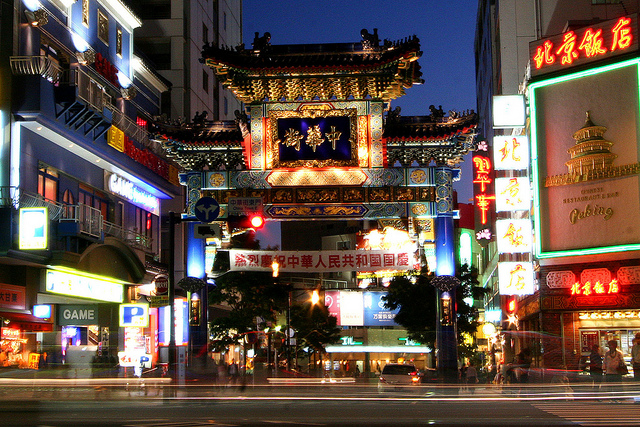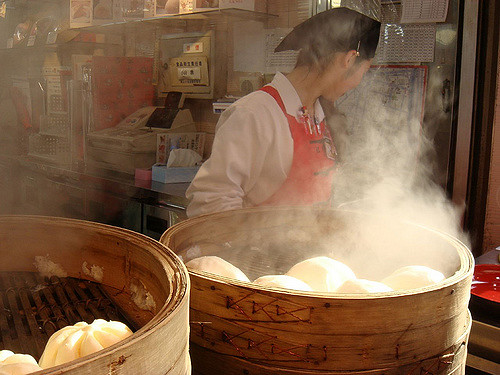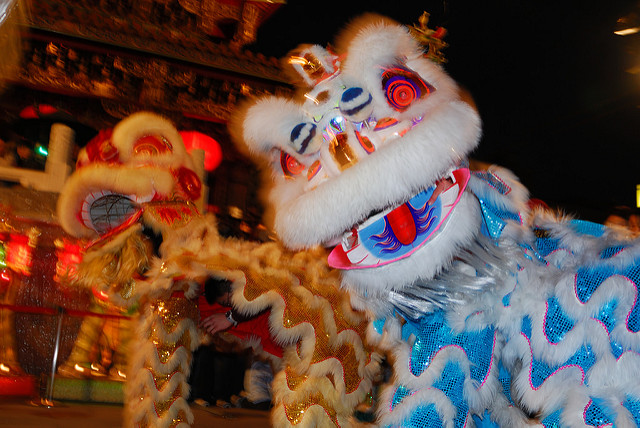
photo by kabacchi
It seems every country has at least one china town. As can be easily guessed, Japan has a few china towns within its land. Among those china towns in Japan, Yokohama China Town is the largest and best known one. It is one of the most visited sight-seeing spots of Yokohama city which almost all the Japanese know its name. What makes this place a little different from china towns in other countries is that Yokohama China Town has established its position as a complete tourist-destination while other china towns mainly work as inhabited areas of Chinese immigrants and their descendants. Yokohama China Town was originally built by Chinese immigrants such as trading merchants about 150 years ago, but gradually transformed to a huge sight-seeing spot where Chinese restaurants and grocery shops gather in. Once you pass through the Zenrin-mon Gate, you are in China. This column introduce the best things to do in Yokohama China Town.
1. Chinese cuisines and gourmets

photo by kobakou
Yokohama China Town is known for good foods and gourmets more than anything. Within this tiny area of Yokohama city, there are over 250 restaurants and diners standing next to each other. Generally, what are called “Chinese restaurants” in Japan are restaurants that serve Japanized Cantonese dishes. In Yokohama China Town, you can choose from variety of authentic Chinese foods such as Beijing, Cantonese, Shanghai and Szechuan cuisines and enjoy them in both in fine dining and budget casual restaurants. Yum-cha is very popular at lunch time. As well as well-known menu like steamed dumplings, spring rolls and xiaolongbaos, each restaurant offers their original snacks. Light snacks sold on the streets are also very popular among visitors. Especially, steamed buns like pork buns and shark fin buns are very much loved by many tourists and visitors. Chinese steamed buns can be purchased from convenience stores across Japan during autumn and winter, but buns you can get in Yokohama China Town tastes totally different from convenience store’s buns. You can easily have one even after you filled up yourself with authentic Chinese dishes at a restaurant.
2. Chinese grocery shops
Among a number of authentic Chinese restaurants, there also are many Chinese grocery shops that trade genuine Chinese ingredients and goods. You can purchase foods and ingredients which are not commonly sold in ordinary Japanese shops, such as century eggs, medicinal soup stocks and Chinese tea leaves. Especially, wide-ranging tea leaves are very popular for gift. Tea drinking is a very common habit of Japanese culture, but it was originally transmitted from China. Other than Oolong tea and Jasmine tea which are commonly consumed in Japan, there are countless kinds of Chinese teas. Yokohama China Town is the best place to explore the profound world of Chinese teas through tasting and tea brewing.
Touring item shops and antique shops is also great fun. The time flies while you watch around old furniture and dinner plates, or beautiful accessories that can be a great accent in your room. There are many lucky charms and accessories using natural stones to bring fortune, which is full of Asian taste. Of course, Chinese dress shops are very popular among female tourists.
3. Seasonal events

photo by yukita
There are several annual events celebrated in Chinese mainland, and some of them are also celebrated in Yokohama China Town. The largest celebration here is Chinese New Year. From the first day of Chinese New Year period until it is concluded with the annual Lantern Festival, the town is filled with a celebration mood for about 2-weeks while traditional Chinese lion dancers drop by each shop to wish fortune for the year, tigers and dragons parade through the town and traditional dancers and acrobatic dancers perform their shows.
Also, Mazu Festival is held on a large scale to celebrate the birth of Mazu. Mazu is a sea goddess widely worshipped in China since the ancient time who is believed to protect people from natural disasters, epidemics, wars and robberies. This goddess was very familiar and important guardian deity for everyday lives of Chinese residents who migrated to all around the world by crossing the sea centuries ago. There is Mazu Miao in Yokohama China Town to enshrine Mazu, where the annual ceremony, Chinese lion dance, Chinese traditional dances and music are performed.
There also is Kantei-byo Shrine which enshrine Guan-yu, the ancient general in the Three Kingdom period of China. Guan-yu’s birthday is largely celebrated every July and miniature shrine carriers, Chinese lion dancers and dragon dancers parade through the entire town.
Ni hao!
At the end of all four points of compass of Yokohama China Town is guarded by the four gates called “paifang”. The gorgeous gates look totally different from any traditional Japanese architectural structures so that you will notice there is a china town straight away. Inside the town is also exotic and attractive. You can easily spend the whole day just by dropping by and looking around Chinese restaurants, shops and historical buildings. It is close from other sight-seeing points of Yokohama city such as Yamashita Park and Yokohama Red Brick Warehouse, so it can be visited while touring Yokohama city. There are an information center called “China Town 80” to support tourists and qualified China Town concierges will help you to find where to visit.
Related Article:
Going abroad without leaving Japan? Shin-Okubo Korean town
